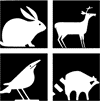Wildlife Damage Management, Internet Center for
Date of this Version
2013
Document Type
Article
Citation
Proceedings of the 15th Wildlife Damage Management Conference. (J. B. Armstrong, G. R. Gallagher, Eds). 2013.
Abstract
Attacks on humans by wild pigs (Sus scrofa) have been documented since ancient times. However, studies characterizing these incidents are lacking. In an effort to better understand this phe-nomenon, information was collected from 412 wild pig attacks on humans. Similar to studies of large predator attacks on humans, data came from a variety of sources. The various attacks compiled occurred in seven zoogeographic realms. Most attacks occurred within the species native range, and specifically in rural areas. The occurrence was highest during the winter months and daylight hours. Most happened under non-hunting circumstances and appeared to be unprovoked. Wounded animals were the chief cause of these attacks in hunting situations. The animals involved were typically solitary, male and large in size. The fate of the wild pigs involved in these attacks varied depending upon the circumstances, how-ever, most escaped uninjured. Most human victims were adult males traveling on foot and alone. The most frequent outcome for these victims was physical contact/mauling. The severity of resulting injuries ranged from minor to fatal. Most of the mauled victims had injuries to only one part of their bodies, with legs/feet being the most frequent body part injured. Injuries were primarily in the form of lacerations and punctures. Fatalities were typically due to blood loss. In some cases, serious infections or toxemia re-sulted from the injuries. Other species (i.e., pets and livestock) were also accompanying some of the hu-mans during these attacks. The fates of these animals varied from escaping uninjured to being killed. Frequency data on both non-hunting and hunting incidents of wild pig attacks on humans at the Savannah River Site, South Carolina, showed quantitatively that such incidents are rare.


